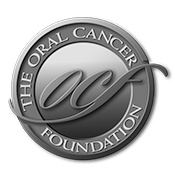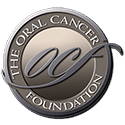What is the Baroreflex?
The autonomic nervous system plays an important role in the regulation of blood pressure (BP). This function depends largely on the baroreflex. The baroreflex provides an instantaneous feedback loop that modulates blood pressure, protecting it from excessive rise or fall. An increase in blood pressure is sensed by low-pressure receptors located in the heart and great veins, and by high-pressure receptors in the carotid sinus. The carotid sinus is just above the carotid artery bifurcation on each side of the neck, and plays a particularly important role in baroreflex function. This the sensor location of most interest to oral, head and neck cancer patients that have had radiation or neck surgery related treatments, as it is the one most easily damaged by either treatment type.
Sensory structures called stretch receptors are located within the outermost layer of the vessel (adventitia) of the carotid arterial wall and the top part of the main artery carrying blood away from the heart (aortic arch). These sense changes in arterial blood pressure and initiate the baroreflex response. An increase in blood pressure is sensed by these nerves that translate the blood vessel wall stretch into “signals” are transmitted via the carotid sinus (Hering’s) nerve, a branch of the glossopharyngeal nerve which provides motor, parasympathetic and sensory information to your mouth and throat, to create a body adaptation that regulates highs and lows. Less important to head and neck patients but part of the process, nerves from the aortic arch travel via the vagus nerve to this same base of skull and brain region. The vagus nerve (tenth cranial nerve) after the spinal cord itself, is the most important nerve in allowing proper functioning of all our autonomic body functions. It is responsible for the regulation of internal organ functions, such as digestion, heart rate, and respiratory rate, as well as vasomotor activity, and certain reflex actions, such as coughing, sneezing, swallowing, and vomiting. Both signals are relayed to the clusters of nerve cell bodies called the nucleus tractus solitarii (NTS) at the brainstem. This is how the regulation of all of our body functions including blood pressure are sensed, gathered, and travel to the brain where proper regulation of the function can be controlled. If you are a radiated head and neck cancer patient and you are have baroreflex dysfunction, please look at another section of the OCF complications of treatment web page which talks about dysautonomia; as baroreflex problems can also be part of a constellation of issues related to dysautonomia caused by scatter radiation to the base of skull, spinal cord, and the Vagus nerve, and not a stand alone problem.
What is Afferent Baroreflex Failure?
Baroreflex failure is the loss or impairment of the buffering capability that prevents blood pressure from rising or falling excessively. Afferent is a term that means “conducting or conducted inward or toward something” (for nerves, the central nervous system; for blood vessels, the organ supplied). Afferent baroreflex failure patients have exaggerated blood pressure responses to pressor and depressor stimuli, and present clinically with hypertensive crisis, (a severe increase in blood pressure that can lead to a stroke), or volatile labile hypertension alternating with episodes of hypotension, or low blood pressure, which can often be experienced on standing up quickly or rising from a supine position (a laying down position). Immediately a person will experience feeling lightheaded and feel faint. There are a variety of causes of postural orthostatic hypotension, but it is common in patients who have had radiation that impacts the neck sensors being described.
What Causes Baroreflex Failure?
Almost all cases of afferent baroreflex failure are secondary to, or as a result of radiation therapy for head and neck cancer. Most patients will experience a measurable decrease in baroreflex function soon after neck radiation. However, overt baroreflex failure occurs in a minority of patients, usually years after the procedure, due to radiation injury and fibrosis involving the carotid sinus.
How Many Patients Develop Afferent Baroreflex Failure?
The exact percentage of patients who will develop this complication and the predictors of disease are not known. In some cases, radiation injury also produces carotid artery stenosis (narrowing of the artery) that contributes to the symptomatology.
What Are the Clinical Features of Afferent Baroreflex Failure?
The main clinical features of afferent baroreflex failure are:
Hypertensive Crisis
A hypertensive crisis is a severe increase in blood pressure that can lead to a stroke. Extremely high blood pressure — a top number (systolic pressure) of 180 millimeters of mercury (mm Hg) or higher; or a bottom number (diastolic pressure) of 120 mm Hg or higher
Hypotensive Episode
A hypotensive episode is the sudden onset of a sustained period of low blood pressure. Extreme cases can cause loss of consciousness and a resulting fall which might cause injuries.
Orthostatic Hypotension
Orthostatic hypotension is a form of low blood pressure that happens when you stand up from sitting or lying down.
All patients with afferent baroreflex failure experience hypertensive episodes while alternating episodes of hypotension are seen in many but not all patients. In essence the brain does not know what the blood pressure is, so unregulated it can be highly variable all the time, in any day; swinging from highs to lows. This is problematic for patients and living with it is difficult.
How is Baroreflex Failure Treated?
Baroreflex failure is arguably the most challenging hypertensive or autonomic disorder to treat and live with. However, it is possible to manage the blood pressure abnormalities well enough to improve the patient’s quality of life and live safely. Treatment usually involves blood pressure medication, patient education, and stress reduction techniques.
There is little evidence-based data to guide treatment. Recommendations rely on understanding the underlying pathophysiology, relevant clinical pharmacology, and anecdotal experience. The goal of treatment should be improving quality of life rather than normalization of blood pressure, which is rarely achievable. Long acting /extended-release blood pressure medications are the mainstay of treatment, used at the lowest doses that prevent the largest hypertensive surges to control hypertensive episodes, often triggered by mental stress or exertion. Old school beta blocker drugs are anecdotally used often. Hypotensive episodes can be managed with countermeasures and short-acting pressor agents if necessary, though most patients treat the highs but not the lows. Note that whatever the treatment, the problem is that if you treat one aspect such as the highs, it will make the lows worse when the body reverts to that portion of the high-low swings that it goes through.
While a separate issue, another factor that can contribute to extreme blood pressure lows is hypovolemia which is not uncommon in head and neck cancer patients that are on full time PEG feeding, or in the middle of their difficult treatment regimes. The sensation of being thirsty is often absent from these patients and they easily become dehydrated if not on a regular schedule of taking in fixed amounts of water each day on a fixed schedule regardless of desire. This cascades into very low blood pressure. Hospitalization and rehydration is many times necessary to prevent a severe adverse event. Many of the traditional signs of hypovolemia—dry mucous membranes, sunken eyes, shriveled skin and tongue, confusion—are classic descriptions of findings in patients near vascular collapse. Poor skin turgor refers to the slow return of skin to its normal position after being pinched between the examiner’s thumb and forefinger. This is an easily detectable sign in younger patients, but not as reliable in older ones, as age and loss of muscle tone under the skin can cause a similar appearance and reaction.
This common problem in head and neck cancer patients has few easy solutions. As mentioned, there are work arounds for some of the extreme highs that should be implemented. But a definitive treatment is not available. The following link and overview, drawn from a 2019 Journal of the American College of Cardiology article has some valuable thoughts on management and also its shortcomings. If you are a patient experiencing baroreflex dysfunction, we suggest making this article available to the doctor/s that are managing your treatments as a starting point reference for guiding their own thoughts.
https://www.sciencedirect.com/science/article/pii/S0735109719381690




